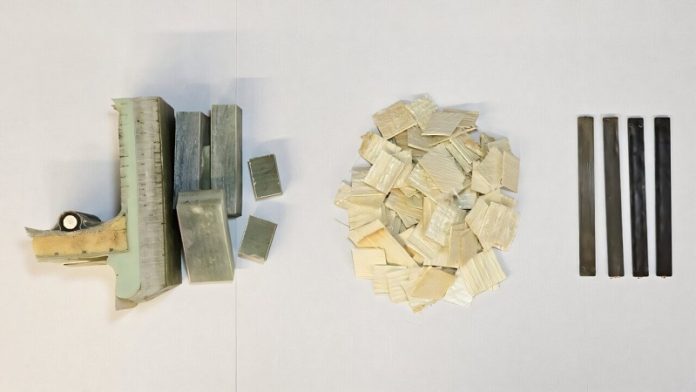
A team of researchers at Washington State University has found a cleaner, simpler way to recycle wind turbine blades and turn them into stronger, reusable plastics.
This breakthrough could help solve a growing waste problem as more wind turbines reach the end of their life.
Wind turbine blades are made from a strong but hard-to-recycle material called glass fiber-reinforced polymer (GFRP).
Unlike regular plastics, which can be melted down and reused, this composite material is cured during manufacturing, making it very difficult to break apart or recycle.
As more wind farms age, thousands of blades are being retired and often end up in landfills.
To tackle this issue, the research team created a new recycling method that doesn’t rely on harsh or toxic chemicals.
They started by cutting the blade material into small, block-sized pieces. These pieces were soaked in a warm, pressurized bath made from superheated water and a mild, low-toxicity chemical called zinc acetate, which is commonly found in throat lozenges and food additives.
The process took just two hours and successfully broke the material down into reusable parts.
Importantly, the team was able to recover both the glass fibers and the resin material in good condition.
These recovered parts were then added to plastics like nylon, creating a new, much stronger composite material. When tested, the recycled mixture made the nylon more than three times stronger and over eight times stiffer.
The team also found that this recycled material could improve other common plastics, such as the types used in milk jugs or shampoo bottles.
Even better, the zinc acetate solution used in the recycling process can be reused. After the reaction, it was filtered and recovered, making the process more cost-effective and environmentally friendly.
One key feature of this method is that it doesn’t need to completely break down the material into separate components.
Instead, it only breaks the complex structure into smaller, meltable pieces that can be blended directly with new plastics. This approach makes the recycling process faster, easier, and more energy-efficient.
The researchers are now working to make the process even simpler by lowering the pressure needed during recycling. They also hope to create future turbine blade materials that are easier to recycle from the start.
As wind energy continues to grow, this new recycling method offers a promising solution for managing waste from retired turbines and creating better, stronger plastics from what would otherwise be thrown away.



